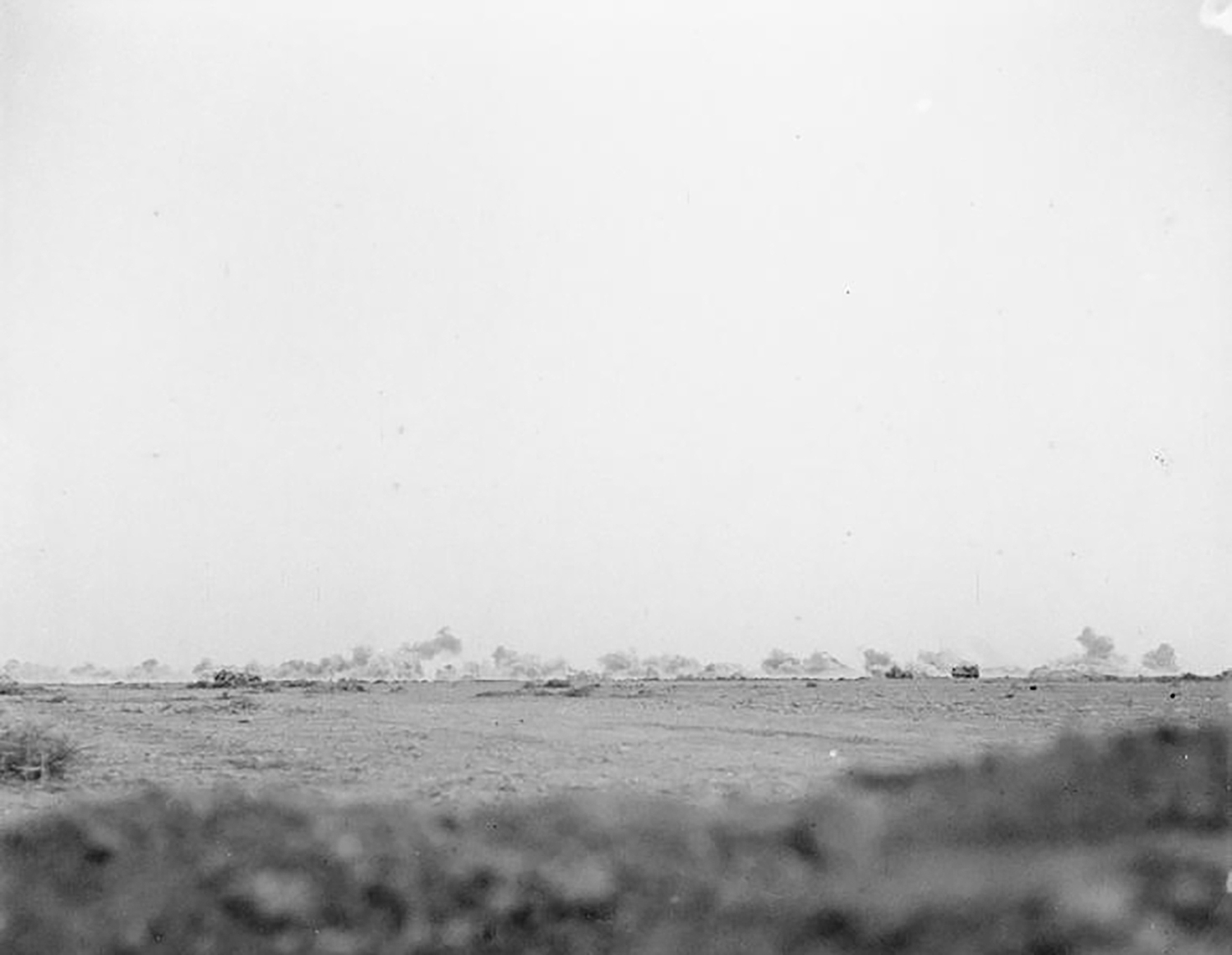
Distant view of the fighting in the “Cauldron,” during Rommel’s attack on the Gazala line, June 9, 1942. Photograph by No. 1 Army Film & Photographic Unit. © Imperial War Museums.
About a dozen Axis tanks rolled past—and almost over—the defenders hidden by dust. The Allied soldiers crouched in shallow pits, only the muzzles of their 75 mm guns visible above the desert’s flat surface. There were tanks in front of them, and now tanks were passing behind them. They were surrounded.
This scene marked the beginning of what’s now called the Battle of Gazala and the Axis effort to surround a vast defensive line of Allied forces in eastern Libya in May 1942. The Axis plan: crush the encircled line, cut off Allied retreat, roll on to British headquarters at Cairo, then the Suez Canal beyond. In that period, the war in the Western Hemisphere turned on whether the Axis could finish off the Soviets, secure an oil supply, and make the cost of invading North Africa and Europe too high for the American public to accept. All three of these goals would be well advanced if the German general Erwin Rommel could finish off Allied forces in North Africa and drive through the Middle East.

The men encircled by tanks were at a sun-blasted place called Bir Hakeim, or “Wise Man’s Well,” the southern anchor of the Allies’ fifty-mile defensive line, called the Gazala Line. Just south of this spot, the desert became an impassable sea of mustardy dust. It was the role of about 3,500 entrenched troops to hold the place, overwatch vast minefields, and keep the Axis from skirting around their flank. The mines and Allied gunners had so far combined to do their job morning of May 27. The husks of about thirty Italian tanks had already been left smoking on the perimeter of their outpost, but a dozen more were making their way toward the defenders of this quadrant. If the tanks pushed past them and pierced the heart of the sprawling base, its commanders could be captured and its communications cut.
Now, amid the kicked-up dust, hazy lights flickered. Men were rolling out of their trenches, Molotov cocktails in hand.
“¡Como en Madrid, compañeros! (Just like at Madrid, comrades!)” someone shouted as they charged the tanks.
These men at Bir Hakeim were Spaniards—Spanish Republicans who had been the first in Europe to defend democracy from Italian and German fascists and were now seeking retribution. Just a few years before, they had defended Madrid in much the same way as they did Bir Hakeim, outmatched by enemy guns and steel.
What led these veterans of the Spanish Civil War to a duel with tanks in Libya in 1942? Explaining requires looking back about a decade. At the turn of the 1930s, Spain had a largely feudal, strictly hierarchical society, with a powerful Catholic establishment and millions of Spaniards living like serfs of the church. The Spanish military, meanwhile, was its own parallel society with outsize control of the state and monarchy. In 1931 a democratic movement ended the monarchy and established a republic. Besides threatening the privilege of the church and the power of the military, the new republic immediately introduced social measures to combat the hunger and ruin of the ongoing depression. For the next few years, the right fought back, sometimes winning at the ballot box, sometimes fighting in the streets. After a coalition including centrist democrats to anarcho-syndicalists united for a decisive electoral victory in 1936, key players in the Spanish military launched a coup. But rebel leaders like General Francisco Franco failed to take over the government and instead triggered a civil war.
In 1936 Madrid was on the frontier between Republican territory—the southeastern half of Spain, which remained loyal to its democratically elected government—and the northwest, which was in the hands of Franco’s junta and rebel army.
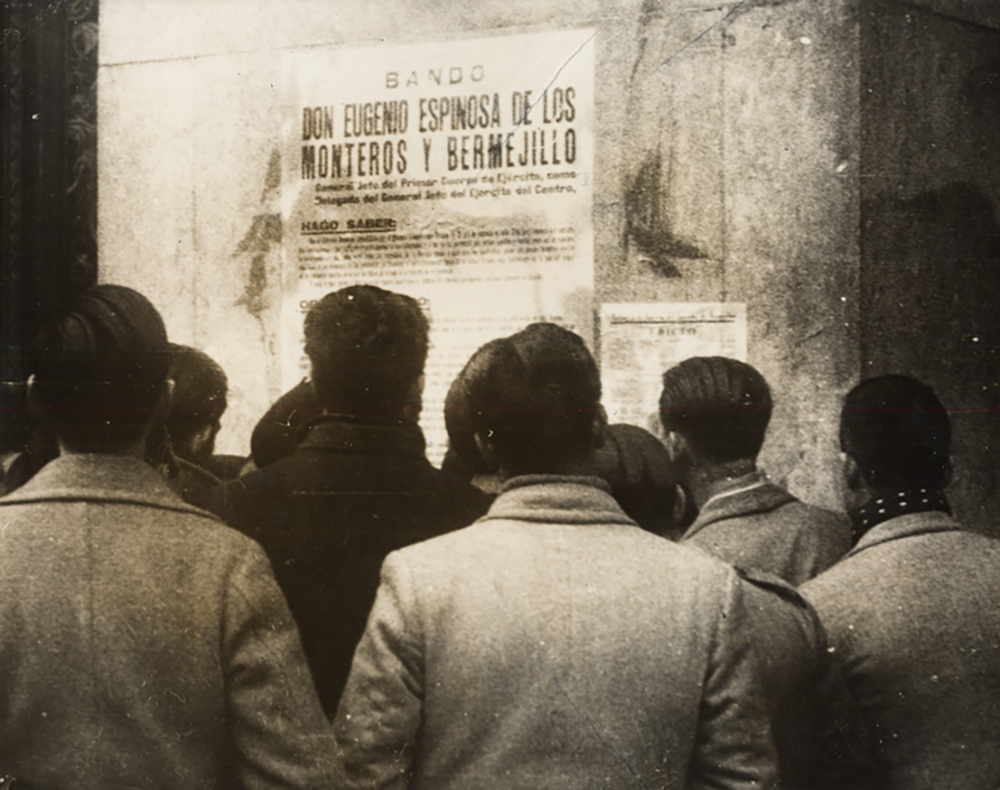
For most of the three-year war, the Republican capital was under siege, throwing off waves of attacks by Franco’s forces and fascist Italian troops. From Madrid Ernest Hemingway described to newspaper readers how German bombers and Nationalist artillery reduced civilians to “torn bundles of old clothing in the dust and rubble.” While fascist nations were providing critical aid to the rightists, people like Hemingway sought to stir the aloof democracies. Yet they remained loath to confront Italy and Germany and mistrustful of the leftist experiment in the Republic. The anarchists and communists among the Republicans frankly scared Europe’s democratic leaders. The anarchists, most called cenetistas after the anarcho-syndicalist trade union CNT (Confederación Nacional del Trabajo), wanted a future without state bureaucracies, capitalism, perhaps even money. Unions would trade with each other to make sure everyone had what they needed. They were, in a manner of speaking, stateless socialists who wanted an end to hierarchy, an end to racial and gender inequality, and the soil shared by all.
For a while they achieved the dream, at least in certain quarters. When George Orwell arrived in Republican Barcelona in 1936, he observed, “It was the first time I had ever been in a town where the working class was in the saddle.” Hardly a romantic, he wrote that the townspeople shared a belief “in the future, a feeling of having suddenly emerged into an era of equality and freedom. Human beings were trying to behave as human beings and not as cogs in the capitalist machine.”
Three cenetistas who fought the fascists in Spain and at Bir Hakeim were Enrique Marco Nadal, José Millán Vicente, and Fermín Pujol Araus. Pujol Araus had joined the anarchist movement over his merchant father’s protests as a teenager, fighting in the streets against strikebreakers. As a mere eighteen-year-old, he enlisted in a pro-Republic militia in Madrid and fought for many months until badly wounded. Marco Nadal had been the young leader of the Valencia railway workers’ union at the outbreak of the war, and his leadership skills made him a successful gun captain in 1936; his older friend Millán Vicente fought at his side in Spain.
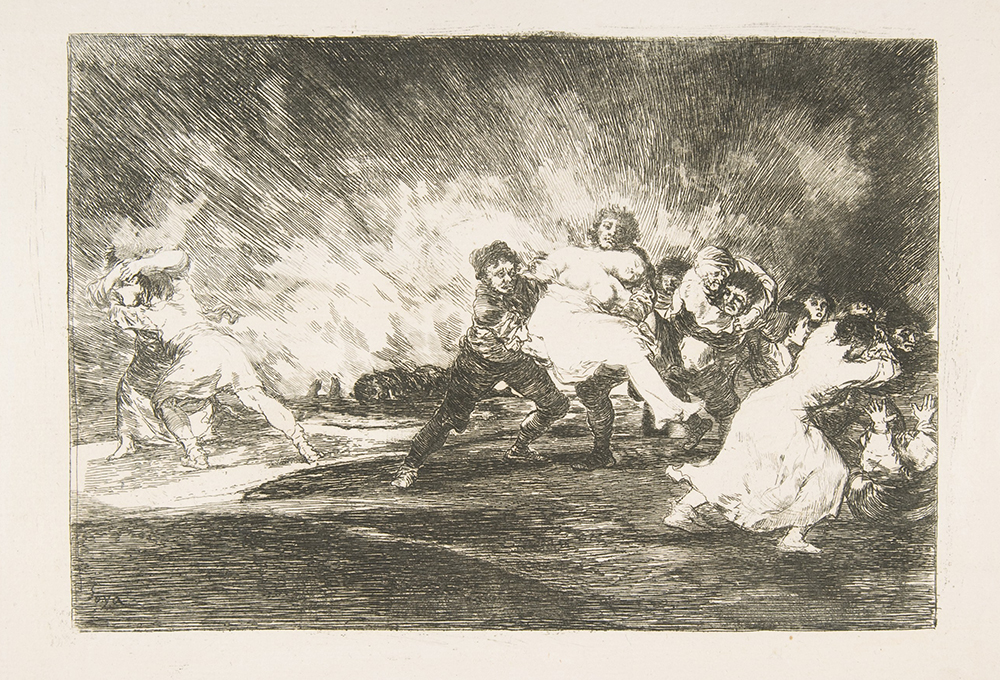
Betrayed by Europe at the end of the Spanish Civil War, these three men nevertheless would eventually free it. Their paths toward that destiny were strange. They first ended up in the French Foreign Legion because they were trying to escape the brutal camps of supposedly liberal France—keeping up the fight against the Fascists hardly entered into it. After that country collaborated with Germany, the men had to escape the French military. They each reenrolled, this time in the Free French Foreign Legion. It was a real choice to fight the fascists this time.
They suffered cruelty and hardship on their paths to the battle at Bir Hakeim; afterward fate landed them in some of the war’s most important battles and turning points. Yet the world hardly remembered them, let alone repaid their sacrifices. Still, interviews conducted after the death of Franco and unique memoirs of those who saw them in action uncover the extraordinary routes of these three rebels and idealists.
When the Spanish Republic was left to its fate by democratic Europe, it was desperate to secure weapons to fight Franco’s military. Joseph Stalin offered a poisoned chalice, sending weapons but also NKVD agents committed to hijacking the Republic and defeating anti-state socialists like the cenetistas. The Republican dream was torn down not only by Franco’s brutality and Germany’s air force but also Stalin-inspired infighting.
At the war’s end in 1939, Pujol Araus, Millán Vicente, and Marco Nadal all landed in concentration camps. Pujol Araus briefly managed to escape Spain through a snowy mountain pass ahead of fascist troops, before being arrested by the French. His jacket and anything of value were lifted by the guards as he joined thousands of other refugees in a makeshift camp amid the dunes at Argelès-sur-Mer. Millán Vicente’s story was much the same; he made it out of Spain through another mountain pass before the French sent him to a camp of around twenty thousand. His friend Marco Nadal was captured by Nationalist troops in the spring of 1939, at a port in southeastern Spain crowded with Republicans trying to flee the country. They threw him in one of Franco’s concentration camps, where tens of thousands would die in the coming years. Marco Nadal soon escaped, thanks to a forged release order, and crossed into France only to be interned in a massive camp in the Pyrenees.
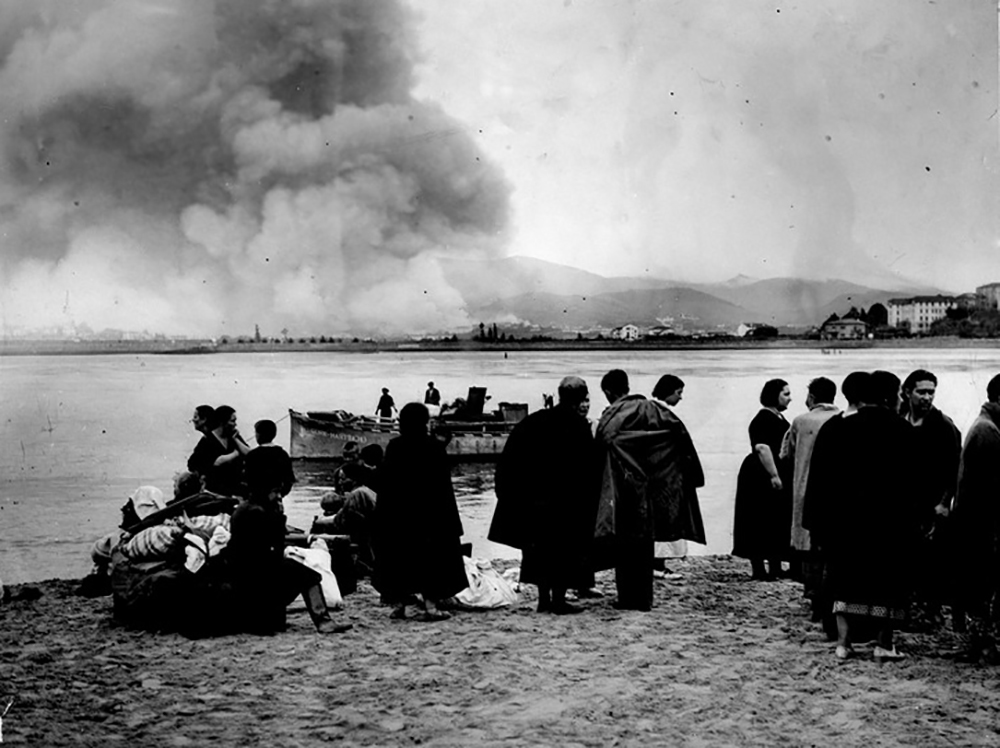
The camps were horrible. Argelès-sur-Mer was perhaps the worst, amounting to an open-air cage on a beach. (After 1940 the collaborationist Vichy government sent European Jews to Argelès-sur-Mer.) In the absence of shelter, Spanish veterans and civilians dug into the sand and collected driftwood to assemble shanties. The sick and wounded began to die; others succumbed to poisonous water.
After six months Pujol Araus and several friends escaped from Argelès by swimming out to sea before scattering. He first quietly blended in among coal miners in a central French village. On the eve of the German invasion, fearing capture by the fascists, who would either imprison him or hand him to murderous Franco, he managed to get passage to Casablanca. The French arrested him again, giving him the option of enlisting in the Foreign Legion or being deported to Spain. Besides not being immediately fatal, the Foreign Legion offered the welcome prospect of fighting fascists. Pujol Araus put on the Legion’s tall white kepi, signing up as “José Artigas,” the name of a boy he’d seen killed by Nationalists.
Enrique Marco Nadal found another route out of the camps: joining a labor unit. He soon shipped out to Syria and Lebanon in the French Empire. His friend José Millán Vicente wanted nothing to do with war anymore. By mid-1939, however, he saw that Europe was about to be engulfed in battle once again; when recruiters offered him a chance to enlist in the Foreign Legion, Millán Vicente asked them where they would be garrisoned. The answer was Syria, which seemed somewhat comforting given how far away from the war it felt.
Millán Vicente didn’t get a year’s respite before he was back at war in southern Syria. It was June 1941, and Allied forces were invading the Vichy-aligned colony. Syria and Lebanon’s colonial French leaders had hosted Luftwaffe planes and ground crew earlier that spring. The regime hoped military collaboration would secure better treatment of occupied France from Germany and that the arrangement would remain secret from the Allies. But Britain’s new cryptographic computer in Bletchley Park exposed the Vichy-Axis cooperation, which belied French neutrality and revealed a very dangerous situation for the Allies. They had to remove the Vichy-loyal authorities or permit the French Levant to be a Luftwaffe base. Australian, British, Indian, and Free French troops invaded on June 8, 1941—meeting fierce resistance from the French.
For several weeks Millán Vicente and his fellow Spanish gunners exchanged fire with Australian guns, not realizing they were defending a colonial government that had made common cause with the Luftwaffe. They moved frequently from peak to peak, digging new defenses in the heat. Arriving at a position not far from the Palestine border, Millán Vicente discovered his old friend Enrique preparing defenses against an Allied thrust. Marco Nadal convinced the newly arrived Spanish gun crews that they should not be helping Vichy. As bad as things looked for them, he argued, the Allies were still standing up to the fascists. They should cross the border to British territory.
“This war is a continuation of your war in Spain!” argued a British officer to the assembled prisoners, not far from Jerusalem. He was trying to get the interned Spaniards to enlist in the Free French Foreign Legion.
“¡Naranjas de la China! (not a chance; literally, “Oranges from China!”)” said someone near Millán Vicente in the lines. The Spaniards remembered the kind of support they received from Britain and France in their struggle against the fascists.
There was more grumbling, but Marco Nadal saw this as an opportunity to continue the struggle against fascism. That, in turn, convinced his friend José. And once again the pair, along with several hundred other Spaniards, were back into the ranks of war.
Fermín Pujol Araus took a different route to meet his old Spanish allies on the opposite side in Syria. After he joined the Foreign Legion in Morocco to escape either internment or return to Franco’s Spain, the French sent him with hundreds of Spaniards to garrison French Senegal.
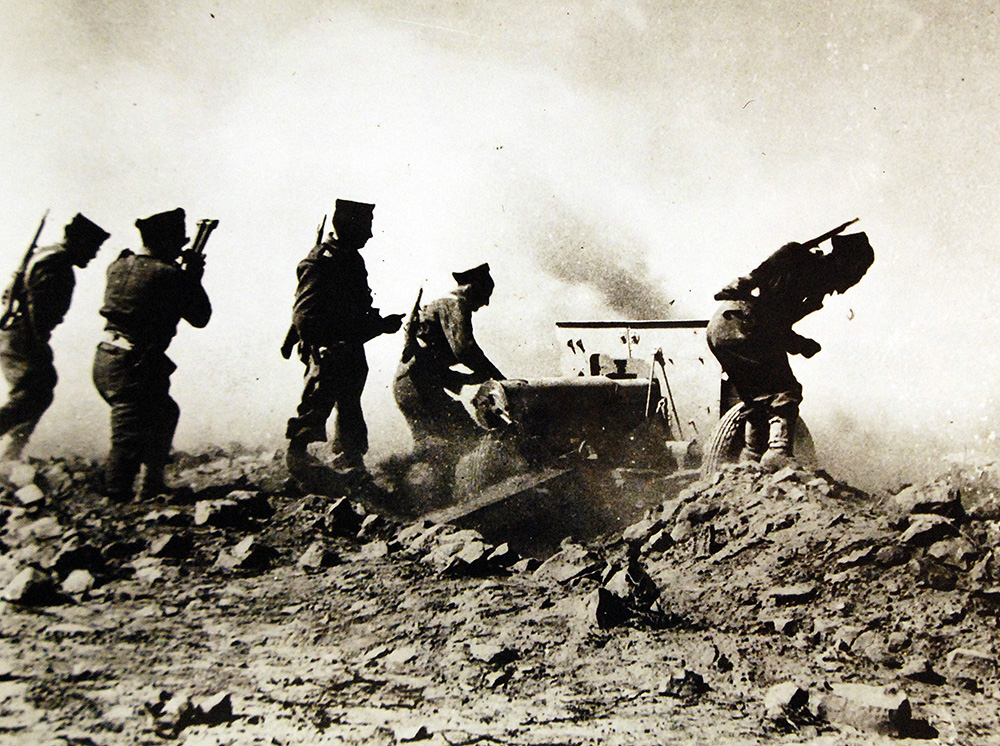
When they learned of the French armistice with Germany after June 1940—and that Senegal’s colonial authorities would lay down their arms, too—Pujol Araus and many of his comrades made plans to escape. Soon after, one hundred of them fled their barracks in Dakar and began an odyssey spanning West Africa. After reaching Free French Congo, they reenlisted with Charles de Gaulle’s forces and were soon en route to northeast Africa and months of bitter fighting against Italian forces there. After that, Pujol Araus and his comrades joined the Allied invasion of Vichy-controlled Syria and Lebanon. While they never exchanged fire, for a few weeks the Vichy-aligned Foreign Legion and Free French Foreign Legion—and their Spanish Republicans—fought on opposite sides.
“Maldita sea la madre que les dio a luz, no nos tendrán, nunca (Damn their mothers, they’ll never take us),” said one of the Spaniards near the gun pits at Bir Hakeim.
Marco Nadal, Millán Vicente, and Pujol Araus fought throughout the morning of May 27, 1942—pounding at the tanks with their 75s, covering those who charged them with Molotov cocktails and those who shot into the tanks’ gun slits—until the stronghold of Bir Hakeim, covered in black smoke, was finally secured, at least for the day.
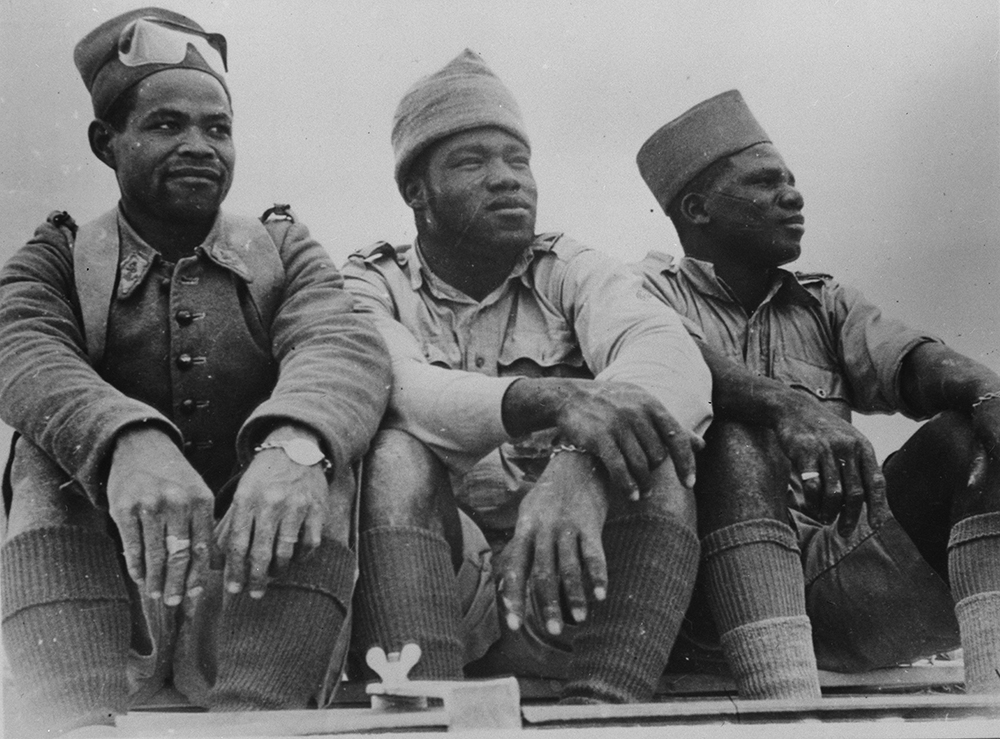
The eight hundred Spaniards repelled repeated tank assaults, endured the attacks of dive bombers—scores at a time—and contended with constant thirst during blistering hot days. At Bir Hakeim they joined over 2,500 others from France, West Africa, Tahiti, Madagascar, and the Levant, as well as a handful from America. They lived underground, some bunked in a buried bus, and only moved around at night. Meanwhile, over thirty thousand Axis troops were winning the Battle of Gazala to the north.
Twice the Italians and representatives of Erwin Rommel approached Bir Hakeim under the white flag to ask the Allies to surrender—to avoid, they said, “unnecessary bloodshed” given the defenders’ hopeless situation. A Spaniard near Enrique Marco Nadal watched one of these cars approaching under a white flag through binoculars.
“¿Qué demonios quiere? (What the hell does he want?)” asked someone among the gunners.
“¡Viene a pedir rendición! (They want to surrender!)”
After two weeks, those at Bir Hakeim, critically low on water and ammunition, were given the order from above to retreat. Its defenders had done the job of holding the flank of Allied forces and making Rommel pay a dear price in men, ammunition, fuel, and attention—thereby allowing many Allied forces to retreat toward an obscure point on the map called El Alamein.
By then Bir Hakeim had been fully surrounded by multiple lines of German troops. Relative safety lay east, in the direction of Egypt. But that route of escape felt too obvious; instead, in the middle of the night of June 10, the defenders of Bir Hakeim struck west. They went straight into the heart of the Axis besiegers before turning south toward a lonely spot in the distant desert. The Germans were shocked at the sudden charge. Of the roughly 3,500 soldiers who defended Bir Hakeim at the beginning of the Battle of Gazala, about 2,500 escaped. Around 140 died in the siege or breakout, with Axis forces capturing about 800.
News of the defense of Bir Hakeim and this subsequent daring sally was beamed to occupied France by the BBC and fluttered to earth in leaflets. The Resistance reported how it lifted hearts and bolstered the name of de Gaulle.
The holdout of Bir Hakeim also helped make possible the Allied rally at the line near El Alamein, which the German Afrika Korps and the Italians tried to break twice, in July and November 1942. Marco Nadal, Millán Vicente, and Pujol Araus once again played a role there. They then joined the Allied push to drive the Axis back westward all the way to Tunisia, where American forces met them and helped encircle the enemy in spring 1943.
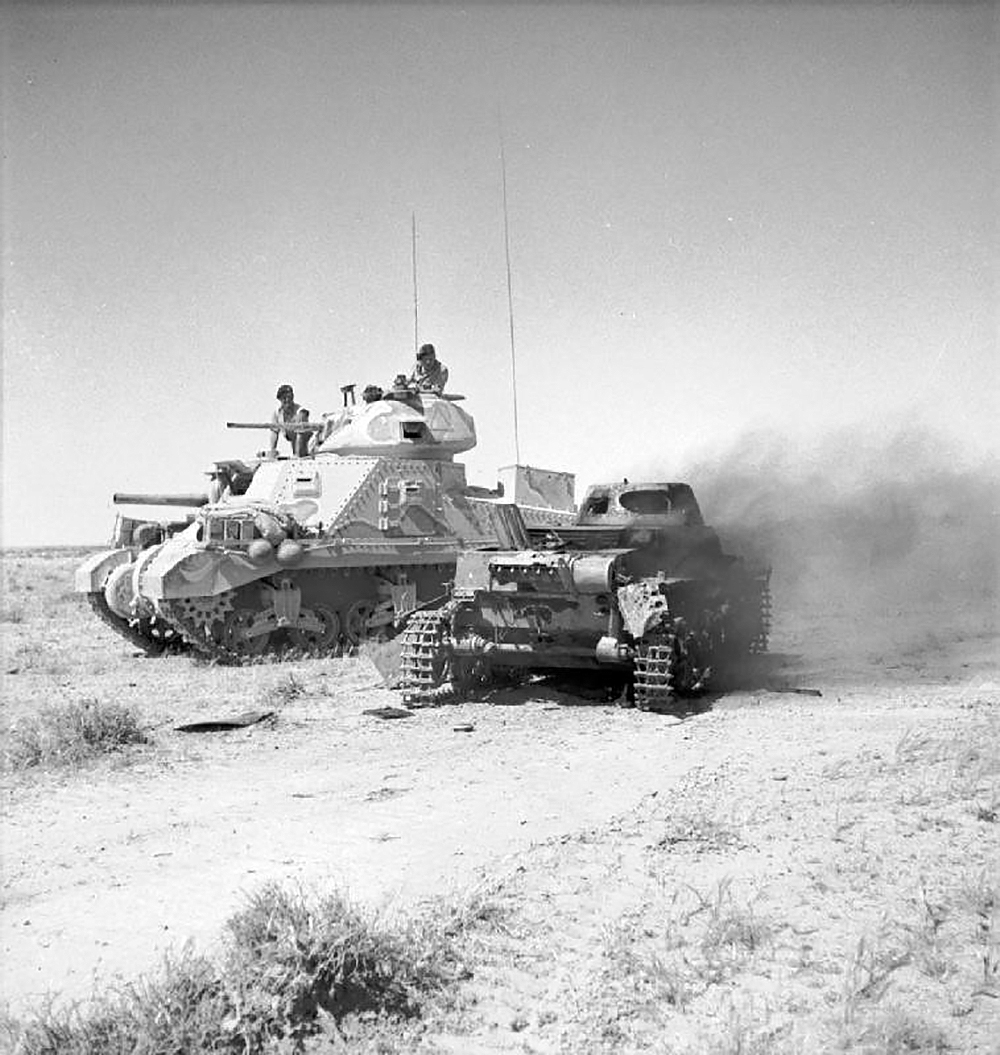
After driving the Axis out of North Africa, Pujol Araus and several hundred other Spaniards joined a French and North African unit of light tanks, half-tracks, and armored cars. The unit shipped out to England, healed and trained, and then landed at Utah Beach in the invasion of Normandy in June 1944. Pujol Araus and his fellow Spaniards rushed into Paris ahead of most other forces to support a Resistance uprising and to seize a share of the glory for the cause of Spain. One of the armored cars was named “Madrid.” The group proudly unfurled Republican flags as crowds cheered.
In the name of crushing fascists, and in the hope of earning Europe’s support for the eventual liberation of Spain, the Spaniards of the company proceeded to fly that flag across France and Germany, in battle to battle, all the way to Hitler’s Eagle’s Nest, near Berchtesgaden. Along the way, they took many German prisoners, whom they often traded to Americans for cigarettes or weapons. (The Americans seemed to like adding to their prisoner count.) They rarely took SS prisoners alive, though; nor did they spare the group of Spanish fascists they discovered volunteering for Hitler’s army.
José Millán Vicente and Enrique Marco Nadal, meanwhile, fought up the length of Italy from 1943 to 1944 before landing at St. Tropez for the invasion of France. After fighting their way to Lyon, they were met by Spanish members of the French Resistance, who had been waging their own guerrilla campaign for years on behalf of the country that had interned them. Fighting onward, their gun unit was captured by diehard SS troops and placed on a train bound for Germany—and likely slave labor. Allied bombs soon derailed that train, and the friends escaped to the forest. They worked with Resistance guerrillas until the end of the war.
A few weeks after the liberation of Paris, Albert Camus wrote a column for Combat, the underground newspaper that was no longer underground.
This European war, which started in Spain eight years ago, cannot be finished without Spain…We left Spain to perish on her own…Why not state here, as loudly as we can, that we must not make the same mistakes again and must recognize our brothers and liberate them as well?
But after the defeat of Germany, Europe once again abandoned democracy in Spain. The Allies had no stomach for a war in Spain’s mountains. The emerging Cold War made them even less eager to hand a democracy back to a leftist government—especially a potential friend to the Soviets. Better, they thought, to have a reliable dictator in Spain than democracy and an uncertain situation.
Enrique Marco Nadal did not give up on freedom for Spain. The idealist returned home in 1945 to try to organize the unions. The soldier became an extraordinary peacemaker who tried to build a broad alliance of anti-Franco forces—anarchist, liberal, even rival Stalinist. He was arrested by Franco in 1947. After he was slated to be killed, brothers-in-arms like George Orwell interceded, as did former French military comrades. From a prison cell he kept up the struggle to unite organizations in a democratic bloc against Franco until his release two decades later.
José Millán Vicente and Fermín Pujol Araus never dared to return to Franco’s dictatorship. They made new lives in de Gaulle’s France, a place that had thrown them in barbed wire, a place they had helped free from captivity. Millán Vicente was given the opportunity to remain in the Legion and ship out to southeast Asia and participate in the anti-colonial movements there. He declined in favor of a new life in Paris. He estimated that 90 percent of the Spaniards at Bir Hakeim died before the war’s end.
Also finding a small room in Paris, Pujol Araus applied for work at a Renault factory as a painter. He could tell the supervisor had no intention of considering him until he produced a letter of introduction from his French captain, a famous liberator of Paris. Pujol Araus got the job. Soon after he started work there, a Frenchman spat something about him being a “foreigner.” Pujol cracked a shovel over his head. He went on to work at Renault for thirty years.